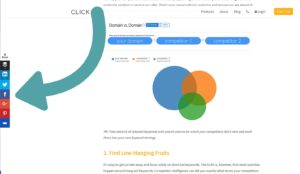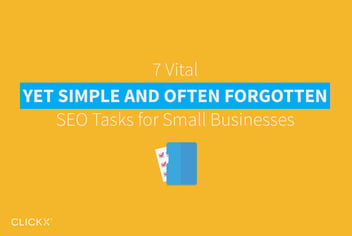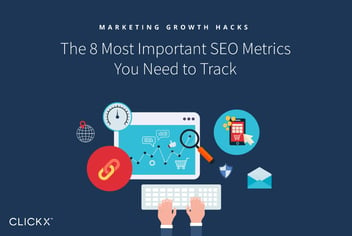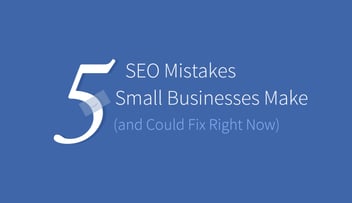Small Businesses: 15 Tips To Perfect Your On-Site SEO
When it comes to Search Engine Optimization (SEO), there are numerous strategies for you to consider and implement. That said, one of the most overlooked aspects of any SEO strategy is getting on-page optimization right.
If you’re a small business owner who relies on search engine traffic for a steady stream of new leads, then getting your on-site SEO perfected is extremely important. In fact, you can see large surges in your search engine traffic just by optimizing your website – i.e. without building a single link.
With the above said, keep reading for a full breakdown of what you can do to properly optimize the most important aspects of your website.
[Tweet “15 #SmallBiz Tips to Perfect Your On-Site #SEO”]

1. Optimize the URL of Every Page On Your Site
Your site’s URLs should be short, descriptive, and void of any complex words. If possible you should incorporate a keyword into your URL. According to Google, keywords that are near the front of the URL are given more weight in search results.
Many WordPress users simply leave their default ‘permalink’ structure and end up with a URL like http://yourcompany.com/p=45. This will only confuse your visitors and certainly won’t work to improve your rankings.
2. Incorporate a Keyword Into Your Title
The most important element you can optimize is your title tag (also know as your H1 tag). This is an excellent place to insert the keyword you want the page to rank for.
Keep in mind that the closer you place the relevant keyword towards the beginning of your title, the more effective it will be in increasing your rankings.
3. Use Media to Decrease Bounce Rate
Bounce rate is calculated by how long a visitor stays on your website before hitting the back button. By adding engaging images, pictures, graphics, and videos, you’ll be able to hold your user’s attention longer, and increase the amount of time they spend on your website.
Bounce rate, along with the amount of time a user spends on your website, are considered important ranking factors in the eyes of Google.
4. Improve Page Loading Speed
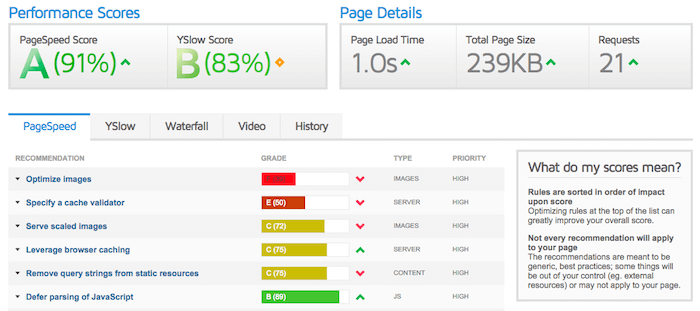
Page loading speed is a very important ranking signal. To see how your page loading speeds stack up, use a tool such as GTMetrix. This will give you a breakdown of your loading speeds, and what you can do to improve your site.
Using caching plugins, and compressing your images will also help speed up your website.
5. Consider Creating Longer Posts
Post length is a hotly debated topic. However, analysis shows that longer posts appear more frequently on the front page of Google.
Longer content can also be useful in that it enables you to incorporate more long-tail keywords, and it increases the time a user spends on your page.
6. Incorporate High-Profile Outbound Links
Outbound links tell Google what your page is about. Try to link out to relevant high-quality sources every couple hundred words.
This will increase the value of your post by showing Google this page is full of high-quality information. However, be careful not to link farm or Google will penalize you.
7. Add the Ability to Easily Share Your Post
Social sharing isn’t currently a factor in Google’s ranking algorithm. However, you can bet it will be in the near future.
Plus, getting your post shared across social media will bring more traffic to your website, and increase the likelihood that someone will link out to your content.
8. Place Your Keyword in the First 100 Words of Your Page
Good on-site SEO will help Google understand what your page is about. A lot of people make the mistake of not including their target keyword until the middle or end of their post.
It’s a good rule of thumb to incorporate your keyword in the first 100 words. This will let Google know what your page is about right away, and help you rank higher.
9. Use Long-Tail Modifiers
Long-tail modifiers are extra keywords that you add to the end of your target keyword. These can either be long-tail keywords you’ve uncovered in your research, or simple modifiers like “best” or “review”.
Although this won’t get you a ton of traffic, it will help you gain small amounts of relevant traffic over time.
10. Have a Mobile-Responsive Website
Google threw down the mobile-optimization gauntlet earlier this year. If any portion of your traffic comes from the mobile web, then your site must be properly optimized.
You can run a test through Google Mobile Friendliness Test to see which pages are performing well and what pages still need to be optimized.
11. Optimize Image File Names
The traffic you receive from an image search won’t be very high-quality. However, every bit of traffic can help your website.
When uploading images to your website make sure you change the image file name to include the keyword you’re trying to rank for and the relevant topic. When uploading your image you’ll also have the ability to modify the Alt text to include your keyword as well.
12. Create High-Quality Content
This can’t be said enough. High-quality evergreen content will always be a benefit for your website. Although there’s no direct way for the search engines to determine the quality of your content, there are a few metrics that will suggest your content is high-quality.
A few of the most common are: repeat visitors, time spent on your website, and the number of bookmarks the post receives.
12. Increase Time Spent on Site
Dwell time is another metric that’s related to bounce rate. It’s essentially the amount of time the user stays on your website before clicking the back button.
By writing longer content the visitor will be forced to spend more time on your website, which means that even if they do leave your site, at least that click will be saved as a “long click”.
“Long clicks” are an indicator of value for Google.
14. Utilize Other Headline Tags
Although H2 and H3 tags aren’t that big of a ranking indicator, it doesn’t hurt to optimize these tags as well. By using subheadings you’ll make your post easier to read, which will increase the likelihood your visitor continuing to read your content.
When crafting your subheadings make sure to include your target keyword.
<h2"> 15. Include LSI Keywords
LSI keywords are keywords that are related to your target keyword. These are similar to the “long-tail modifiers” we mentioned above, but these keywords have a guaranteed search presence.
You can find these keywords by typing your target keyword into the Google search bar and seeing which keywords appear in the drop-down bar, or related keywords section. Take note of these and incorporate them into your content.
Bonus – Increase Your Internal Linking

Another way to boost rankings is to improve your internal page linking structure. The internal linking master is Wikipedia.
You don’t have to go to their extremes, but by adding keyword links to other pages and posts on your website, it will be much easier for the search engine robots to crawl. Consider adding a few links to older posts within each post you publish.
Summing Up
There you have it – 16 ways to improve your search engine rankings without having to build anymore outbound links. By spending the time to dial in your on-site SEO, you’ll see an increase in the effectiveness of your offsite SEO efforts.
When you’re relying on your website to bring you new leads for your business then it’s very important to make sure every part of your SEO strategy is working in your favor.
Any onsite SEO tips we missed? We’d love to hear what’s working for you, please share in the comments below.
</h2">


